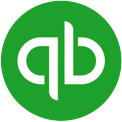2. Identify What’s Coming In and What’s Going Out
While this might be obvious, you can’t run an accurate cash flow forecast without knowing the figures. This forecast details your company’s position in relation to what you have coming in versus what you have going out. To begin, figure the amounts of cash coming in for the time frame you’re forecasting. Where is it coming from? In this equation, you’re not thinking how much you’re able to produce, but instead the payments you foresee collecting for your products or services.
Looking at past years’ numbers for the time frame you’re forecasting is an excellent starting point – but don’t forget to take into account various factors, such as buyer confidence during that past period, as well as confidence in small business, especially if you’re reliant on business-to-business sales. As a small business owner, you know sales aren’t consistent. Opening up lines of communication with other small business owners can help you better gauge these levels of confidence giving you valuable insight into aspects of your company that can impact your figures, negatively or positively.
In your forecast, allow flexibility for any one-off payments that might come up down the road. These figures can include:
- Purchases of business equipment
- Training for new hires
- Annual bonuses
- Loan setup fees
If you’re unsure if any of these expenses might show up, it’s better to use your business savvy and include them as a safety precaution. This aspect of your cash flow forecast can also include surprise inflows of cash you weren’t expecting. A detailed estimation of your incoming cash flow might consist of:
- Rebates and refunds
- Additional capital from partners
- Approved grants
- Loans you gave are paid back
- Sale of an asset
- Royalties
- Other miscellaneous fees
Once you prepare all the necessary data and decide on the time frame for your forecast, you need your beginning bank account balance for that period. This amount is also known as cash on hand. Next, add all the projected inflows of capital and subtract the projected outflows. If you have a positive number, great. If not, you might have to readjust your planning for that period.
At the end of the period you forecasted, review your estimate against your actual cash flow. If anything in your forecast didn’t measure up, this gives you a vibrantly clear picture as to why.




